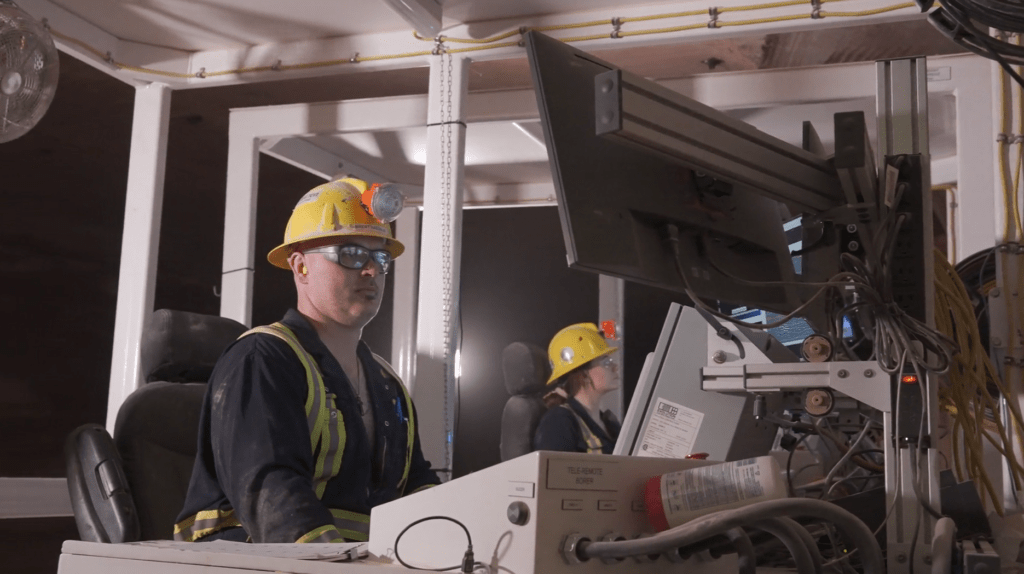The minerals industry in Saskatchewan is an important one. We produce two very key minerals here: potash and uranium. In fact, Saskatchewan has the largest potash industry in the world, accounting for ⅓ of the world’s annual production!
This industry, like many others, is facing new trends of automation and digitization. Automation brings with it benefits such as increased efficiency, productivity, and safety. So, adoption of new technologies seems like an easy decision—but in reality it’s not so simple. While some are excited about this shift, others are less willing to adapt.
The Digital Dichotomy
Embracing automation has been a challenging scenario within the industry. Some organizations are happy to embrace innovation and implement automation in their processes, while others are more reluctant to face this change. This creates a potential digital dichotomy where the importance and dynamics of this major technological shift are being considered.
On one hand, we have traditional organizations. They don’t monitor digital trends and haven’t adopted them into their operations, which means that they don’t have any structures in place to manage an automation transformation and don’t identify digital skill gaps in their establishment. Their workforces tend to have more traditional skill sets.
On the other hand, we have modern organizations. They have created systems within their organizations to manage digital transformation and prioritize hiring a more digitally-oriented workforce. These groups note gaps in their workforces’ digital skills and foster learning opportunities in response.
This split in the industry means there’s no one way to implement digitization in organizations.
It also influences how people think about automation within the industry. Where an organization lands within this digital dichotomy affects its hiring practices and day-to-day operations.
Changing Roles Due to Automation
A 2020 World Economic Forum report outlined some of the major talent and hiring trends in the mining and metals industry. The following are the top talents the minerals industry would like to see in their workforce:
- Technology use, monitoring, and control
- Analytical thinking and innovation
- Critical thinking and analysis
- Complex problem-solving
- Systems analysis and evaluation
These are just the top five, and one clear trend continues down the list: employers want technologically capable employees with adaptable skills.
This same report covered the roles that are becoming redundant and the ones that will take their place. At the top of the Redundant Roles list is the position of Data Entry Clerk, while at top of the Emerging Roles list is AI and Machine Learning Specialists. Likely to no surprise, the Redundant Roles list consists largely of jobs that could be done by technologies.
The gap between traditional and modern roles is growing, and employers need to retrain their employees or hire new talent to fill them.
Role Hybridization in the Minerals Industry
Because automation is still in the early stages, there’s no standard evolution of roles in minerals organizations yet. The industry is still developing technologies and automating processes continually, so jobs are becoming increasingly hybrid.
This is especially true for organizations embracing automation. Depending on education and experience, some employees make use of both technical and manual skills, while others are more specialized.
How Does Automation Encourage Safety?
Safety is a huge driver behind the adoption of automation in the minerals industry. The first and more clear benefit of the automation of processes, use of robotics in critical activities, and remote operation centres, is the improving of safety by reducing the number of operators required in potentially hazardous sites.
Automation also takes the unpredictable and unintentional human element out of the equation. Systems are designed to measure the conditions of entire mining sites and alert people when anything is off. Automating mine sites means monitoring processes are more accurate and extensive.
Additionally, automation can monitor the wear and tear to equipment, and set off recommendations to perform maintenance on equipment. This heads off future malfunctions and keeps workers safe from possible hazards.
Finding Digital Talent
Because digital innovation in the minerals industry is in flux, finding people equipped to manage it can be a challenge. Workers in the industry are already being retrained, but new minerals professionals must come equipped with a broader skill set.
Collaboration between the government, educational institutions, and minerals companies is necessary for the future of educating and preparing a new minerals workforce. At IMII, we are working towards the goal of connecting these three pillars.
For example, our Programs Road-Mapping Assessment worked with industry, government, and academic institutions to determine gaps in the Saskatchewan minerals industry talent pipeline. Projects like these are our mission—invigorating the minerals industry in Saskatchewan. Check out more of our initiatives and get to know our work!



